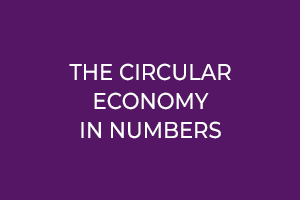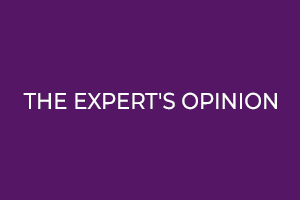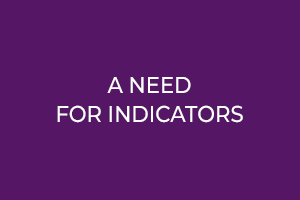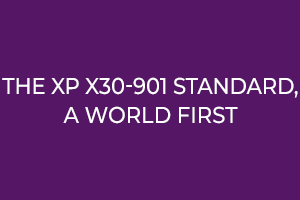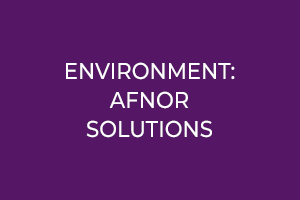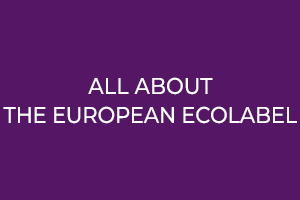Circular economy: the keys to effective action
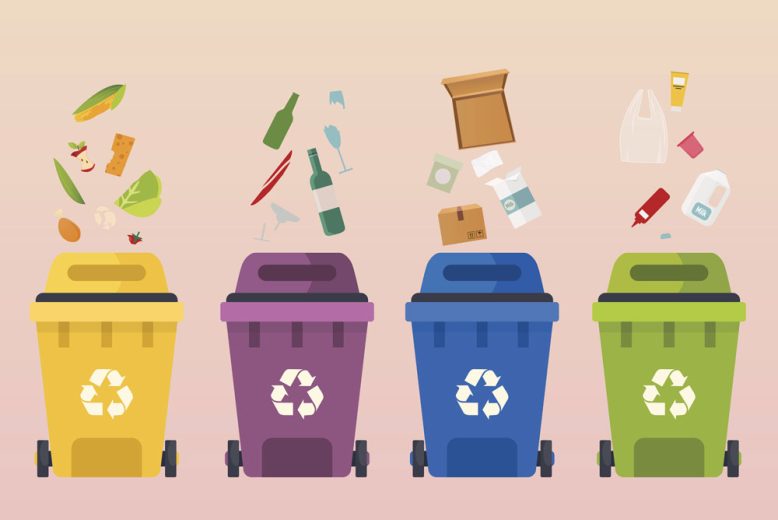
The circular economy is a fashionable concept at a time when resources are dwindling, short circuits are seductive, and the government has published a roadmap on the subject. It should be part of your corporate strategy. How do you get started? What means should we use? Voluntary standards, assessments and labels, training courses and online tools exist or are being developed to help you. Panorama.
On April 23, 2018, the Prime Minister and the Secretary of State for Ecological Transition presented a roadmap on the circular economy. At the same time, the European Union is finalizing its own, which will revise four major texts: the Waste Framework Directive, the Packaging Waste Directive, the Landfill Directive and the Directive on Electrical and Electronic Waste. Circular economy, what’s that? This concept, which originated in the 1970s, has been gaining in popularity in recent years. In fact, it is seen as a relevant and effective way of minimizing the environmental impact of human activities, from all points of view: depletion of resources, depletion of biodiversity, various forms of pollution and climate change. What exactly are we talking about? An ” economic system of exchange and production which, at all stages in the life cycle of products (goods and services), aims to increase the efficiency of resource use and reduce the impact on the environment, while developing the well-being of individuals “, according to the Ademe definition. In this respect, the circular economy is opposed to the linear economy: stop the infernal triptych of produce-consume-throw away.
For Ademe, the subject can be tackled from three angles: waste management, supply from economic players, and consumer demand and behavior. Each of these angles covers seven areas: sustainable sourcing; eco-design; industrial and territorial ecology; functionality economy; responsible consumption; extended useful life; and recycling. A sign that it matters to the authorities, the circular economy is even enshrined in law, in this case the law on energy transition for green growth of August 18, 2015. And many business sectors are embracing the approach, most recently the federation of beauty companies, which published its white paper on best practices on March 14, 2018. Right up to the MEDEF, whose reference guide (” The circular economy, a growth and competitiveness strategy for businesses “) dates back to December 2014.
Des normes volontaires pour une démarche efficace
So much for theory. Because in practice, while everyone understands the benefits of no longer producing, consuming and throwing things away without thinking, taking action is much more complex. And some concepts may seem overrated or a little vague. As Emmanuelle Moesch, project manager at the Institut national de l’économie circulaire, explains, ” this approach is first and foremost a state of mind, which implies constant self-questioning. The most important thing is to first learn about its principles, before including it in all your organization’s processes. “.
A common mistake is to fall into the trap of the rebound effect or pollution transfer. In fact, when we think we’re doing the right thing, we sometimes do even worse. Emmanuelle Moesch points out: “Just because you implement a circular economy approach doesn’t mean you’re reducing your impact on the environment. For example, if you’re in an area where wood is scarce and, thinking you’re doing the right thing by using a renewable material, you replace certain resources with this material by importing it from afar, you’re not necessarily talking about a circular economy “: transport can cancel out the environmental added value.
GESTION DES DECHETS ET RECYCLAGE
Rejoindre la commission de normalisation
In the absence of unanimously agreed rules, how can we adopt an effective, virtuous approach? A future management system standard, along the lines of ISO 14001 for environmental management, should help companies and local authorities to see things more clearly. The circular economy is one of the priority themes of the French standardization strategy,” explains Corinne del Cerro, Head of Development for the environment and social responsibility markets in AFNOR’s Orientation and Development department. There are almost 700 standards linked to the circular economy, most of them cross-cutting, and some 15 are currently being drawn up at European level, including product life extension and reparability. But there is no dedicated generic standard. An expert group dedicated to the circular economyformed at the end of 2017 as part of the “Waste Management and Recycling” standardization committee , set about the task. “Since this article was written, the famous standard has been published as XP X30-901.
Voluntary standardization: a European challenge
The transition to a truly circular economy seems essential in Europe, the area most structurally dependent on resources from other continents. Hence the importance of issuing a voluntary standard, insists François-Michel Lambert, president and founder of the Institut national de l’économie circulaire: ” We need to take advantage of the flaws in the current model to seize opportunities. A standard for circular economy management within the company would consolidate all individual approaches. Take the automobile, for example. Today, a car is immobilized 90% of the time and occupied by an average of 1.4 people. Tomorrow, we’ll have shared vehicles and robot cabs. We’ll be at the crossroads between private cars and public transport. With a ton of material, we can provide many more mobility services! It’s a question of organizational breakthroughs, and therefore of new management. It’s this new management style that needs to be implemented, in a structured and therefore standardized way. ”
While we await the emergence of a standard available today under the title XP X30-901 from AFNOR Editions, it should be remembered that the normative landscape already covers certain areas of the circular economy, such as responsible purchasing (ISO 20400 standard), compost quality, the economy of functionality, eco-design and bioplastics. There are also plans for voluntary standards on programmed obsolescence and deposits. And where there are standards, there are also monitoring indicators: the Institut National de l’Economie Circulaire (National Institute for the Circular Economy) has joined forces with Entreprises pour l’Environnement to centralize these tools, which should help economic players in their approach.
MANAGEMENT ENVIRONNEMENTAL
Acheter la norme XP X30-901
Des outils ludiques et informatifs complémentaires
Outre la normalisation, d’autres outils peuvent aider à déployer, cadrer ou améliorer un projet d’économie circulaire. Sur ce terrain, les publications de l’association Orée font référence. Du côté du groupe AFNOR, qui est lui-même adhérent d’Orée, le livre 100 questions sur l’économie circulaire (AFNOR Éditions, 2016) apporte des réponses synthétiques et claires à toutes vos interrogations sur les enjeux, méthodes et moyens existants. L’économie circulaire est également au menu d’AFNOR Compétences, la filiale formation du groupe. Son catalogue 2018 propose un programme d’une journée intitulé « Économie circulaire : comprendre et créer votre modèle économique innovant ». L’originalité de cette formation transversale est son côté ludique et très concret. « Après avoir rappelé les grandes lignes directrices de l’économie circulaire, je fais toucher du doigt la réalité aux participants via un business game, précise Ivan Grenetier, formateur NuevoMund. Les participants s’inspirent d’un cas pratique et d’une mise en situation pour trouver ensemble des idées d’orientation vers cette démarche vertueuse. » Le principe ? Entrer en mode projet pour faire évoluer le business model d’une entreprise (partenaires, activités, valeur ajoutée, etc.) vers plus de circularité : comment recycler et valoriser les produits en fin de vie, comment changer un produit en service, etc.
Des signes de reconnaissance pour afficher votre engagement
Après le diagnostic, la reconnaissance : pour les entreprises désireuses d’aller plus loin après avoir « pris la température » et d’afficher leur engagement, AFNOR Certification propose des solutions spécifiques. Si vous faites de l’économie circulaire, proclamez-le haut et fort, avec un signe de confiance qu’un un organisme tiers indépendant vous remettra après audit ou évaluation ! En effet, pour se démarquer et séduire leurs clients et usagers, de plus en plus d’entreprises et d’acteurs territoriaux cherchent à faire reconnaître leur démarche d’économie circulaire au moyen de signes distinctifs, basés ou non sur des normes volontaires, comme la célèbre certification AFAQ ISO 14001 pour les systèmes de management environnemental.
Plusieurs de ces marques de distinction sont d’ailleurs citées dans la feuille de route gouvernementale, dont l’Écolabel européen, créé en 1992. Aujourd’hui, 54 000 produits en sont porteurs en Europe, et c’est la France qui en compte le plus, après l’Italie, comme cela a été rappelé le 13 mars dernier lors de la célébration des vingt-cinq ans du petit logo à fleur, sur le parvis de la Défense.
ECO-CONCEPTION
Découvrir la certification AFAQ Éco-conception
Within the company, these distinctive signs can be of interest to purchasing departments, which, by giving preference to suppliers of recycled products or suppliers who are committed to recovering end-of-life products and recycling them locally, often come to the circular economy like Monsieur Jourdain makes prose: without knowing it. ” The AFNOR group has invested in the field of responsible purchasing support for both buyers and suppliers, with CSR risk mapping for suppliers, a supplier evaluation and selection platform, and tools for assessing the CSR performance of purchasing departments, leading to either the RFR (Responsible Supplier Relations) label, or AFAQ 20400, based on the ISO standard of the same name”, explains Mélodie Merenda, CSR project manager at AFNOR Certification.
There’s also AFAQ Biodiversity, which assesses the maturity of a company’s approach to protecting and taking account of biodiversity in its activities, and above all AFAQ Eco-design, which is closest to the foundations of the circular economy. This assessment proposes a number of solutions that respond to government concerns,” continues Mélodie Merenda. For example, extending the life of products, systematically thinking about end-of-life from the product design phase, or incorporating more recycled raw materials into new products. “Finally, the TEEC (Energy and Ecological Transition for Climate) label, also cited by the Ministry (which created it in 2015), guarantees that investments are geared towards financing the ecological and energy transition. Indeed, green finance is even inspiring the European Commission, which presented its dedicated plan in early March 2018, including a draft label for green financial products. So, decision-makers seem to agree: the future will be circular, or… it won’t be.
TRANSITION ENERGETIQUE
Découvrir le label TEEC
3 QUESTIONS A CHRISTIAN LEVY, VICE-PRESIDENT DU COMITE STRATEGIQUE ENVIRONNEMENT ET RSE AU SEIN D’AFNOR NORMALISATION ET MEMBRE DU CGEDD (CONSEIL GENERAL DE L’ENVIRONNEMENT ET DU DEVELOPPEMENT DURABLE)
 Vous animez un groupe d’experts (AFNOR, entreprises, fédérations professionnelles, etc.) pour élaborer une norme de management dédiée à l’économie circulaire. Où en êtes-vous ?
Vous animez un groupe d’experts (AFNOR, entreprises, fédérations professionnelles, etc.) pour élaborer une norme de management dédiée à l’économie circulaire. Où en êtes-vous ?
Tout est parti en 2017 de la décision du comité stratégique d’AFNOR d’élaborer un document-cadre pour aider les profezssionnels siégeant dans les commissions de normalisation à prendre en compte l’économie circulaire. Un groupe de travail comptant des représentants des entreprises de notre comité stratégique ont rédigé un document définissant l’économie circulaire et listant les domaines d’action, les incidences, etc. Les entreprises membres ont trouvé cette grille très utile, non seulement pour l’approche normative mais aussi pour propres projets opérationnels. D’où l’idée d’élaborer une norme volontaire donnant des lignes directrices pour le management de projets participant à l’économie circulaire, dans le même esprit que celles portant sur le management de la qualité, de l’environnement ou de l’énergie. Notre première réunion de travail, qui comptait plus de 50 personnes, a eu lieu le 29 janvier. Le comité stratégique de l’agroalimentaire, qui a appliqué la grille à la production de gelée royale, et les cimentiers, qui ont eux aussi testé la trame, ont relaté leur expérience. Un premier projet de norme et un échéancier pour la fin 2019 ont été établis. Le 8 mars dernier, une deuxième plénière a réuni une quarantaine de participants motivés et proactifs.
Quel est votre objectif ?
Nous souhaitons que la France propose un projet de norme volontaire d’ici à fin 2018 sur le plan européen, voire international au sein de l’ISO. Le texte reprendrait les trois objectifs de l’économie circulaire et les sept domaines d’action définis par l’Ademe, enrichis. Toute entreprise qui souhaite engager une démarche liée à l’économie circulaire pourrait ainsi appliquer cette grille d’analyse croisée, qui compte 21 points, avec l’assurance qu’elle parle le même langage que sa voisine. Plusieurs fédérations professionnelles, qui vont passer leurs projets au crible du projet de norme, devaient nous faire part de leurs conclusions à la plénière d’avril.
Quel est le calendrier ?
Il est très serré, mais c’est jouable ! Nous enverrons le pré-document normatif en septembre aux instances internationales pour décision. Parallèlement, nous le testerons auprès des partenaires européens pour voir s’ils veulent se joindre à nous. Nous réfléchissons aussi à une participation au G7, présidé par la France en 2019 : l’un des thèmes pourrait être l’économie circulaire. Nous pourrions organiser des ateliers et échanger sur le projet de norme.
Monitoring indicators: a guide to choosing the right one
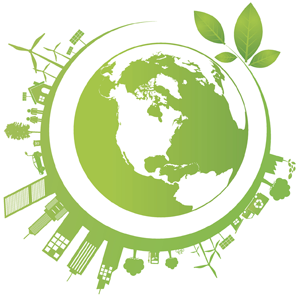 What indicators should be used to determine whether an initiative is part of the circular economy? In 2017, the Institut national de l’économie circulaire launched a working group with the association Entreprises pour l’environnement (EPE). ” When we review the academic literature, we find that product indicators dominate, and this is not appropriate for companies offering services,” explains Emmanuelle Moesch, IEC project manager.
What indicators should be used to determine whether an initiative is part of the circular economy? In 2017, the Institut national de l’économie circulaire launched a working group with the association Entreprises pour l’environnement (EPE). ” When we review the academic literature, we find that product indicators dominate, and this is not appropriate for companies offering services,” explains Emmanuelle Moesch, IEC project manager.
Some companies have set up indicators for themselves (quantifying the lifespan of their products, the rate of reuse of materials in their products, etc.), but this remains partial. A large proportion of indicators concern the downstream end of the chain, notably waste. On the upstream end of the chain, there is the monitoring of progress in eco-design, even if this approach remains difficult to measure. Other indicators measure industrial and territorial ecology initiatives, but there is a lack of indicators for companies that make sense on a global scale. A guide offering an overview of these indicators is expected in October 2018, with the rebound effect taken into account. ” It will be highly complementary to the work currently being carried out within AFNOR to develop a management system standard ,” comments Emmanuelle Moesch.
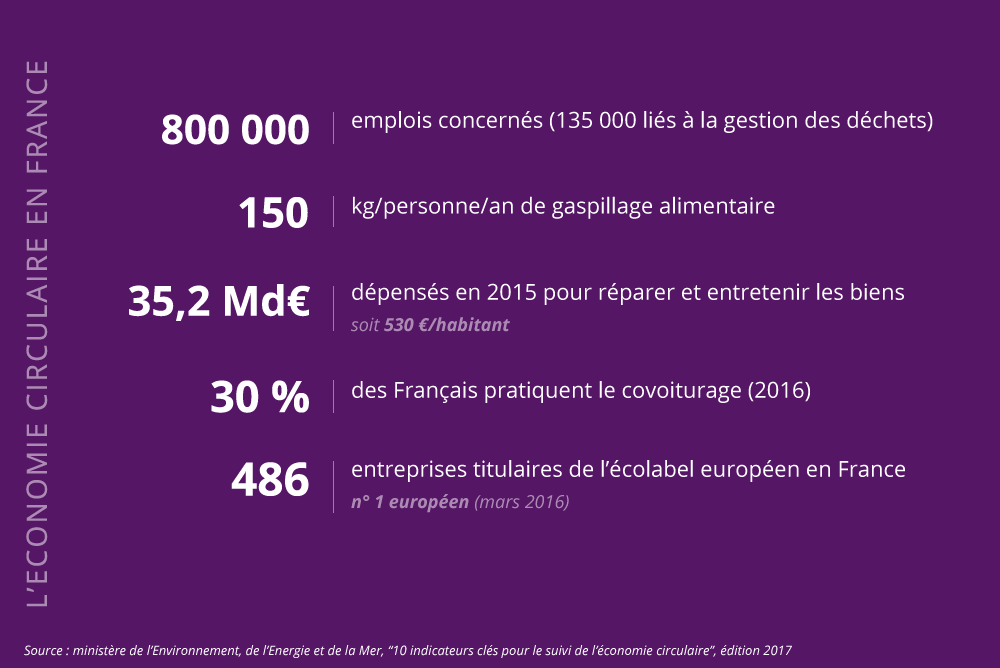
iStock/Getty Images Plus
Get certified
